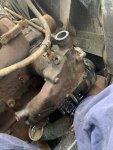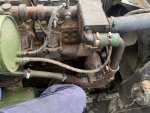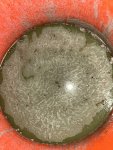Alright boys, it’s time for a Coolant Tech-talk! I’m working on a M816 replacing the Oil Cooler, but this knowledge is going to apply to ANY military vehicle and some civilian rigs too.
Let’s talk about coolant, all MV’s run green coolant (ethelyne Glycol) and most older civilian rigs run it too. I’m going to ruffle some feathers here so get ready. This coolant begins to age the moment it’s poured into your cooling system, gradually becoming acidic and losing its anti-corrosive properties, at around 3-5 years it is “used up” and NO LONGER protecting your engine or cooling system. Will it freeze? Probably not, but it’s freeze point will be higher than when it was new.
Now you might ask “Why does this matter?” Well in short, as this coolant breaks down, it begins attacking your hoses, gasket surfaces, and cylinder liner o-rings, or anything it touches causing cumulative damage. It won’t turn xx years old and immediately after blow your engine, but it reeks unseen havoc over time.
The only true solution to this is to either:
A) convert to a long-life diesel rated HOAT or OAT coolant (which, depending on your application, will extend OR decrease life of cooling system components such as hoses, water pump, and o rings to include cylinder-liner O rings in sleeved engines. Research on YOUR specific application must be performed)
B ) EVERY 3-5 years, Flush your cooling system with clean water, and then refill with your standard “Green” ethylene glycol based coolant previously used. And if your rig is diesel or multifuel you need to add a supplemental cavitation additive, otherwise known as SCA’s. Dosing is based off coolant volume. Now I’m probably going to get some argument stating “Well wet/or dry-sleeved engines don’t suffer cavitation!” And quite frankly you’re WRONG. All Diesel engines due to high-frequency combustion cause cavitation of the coolant on the external cylinder walls period, there is no argument to by had; however some suffer more from this phenomenon (ie. The international 7.3 IDI) than others and it’s extremely cheap insurance to protect your engine.
You’ll hear arguements of “it isn’t broke don’t fix it!” Or “Well my coolant is clean and green so it’s good!” The proof is in the science behind the coolant. My picture is the perfect example of direct failure due to old coolant turning acidic attacking the copper tubes on a NHC-250 oil cooler. That’s all for now
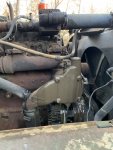
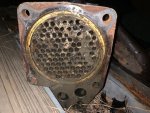
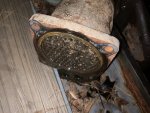
Sent from my iPhone using Tapatalk




















